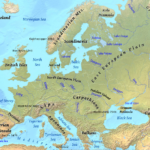The Great East Japan Earthquake and Tsunami (GEJET) disaster is the deadliest disaster after the Second World War in Japan. The earthquake happened at 2:46 p.m. on March 11th, 2011. The total casualty number is 19,846 based on the EM-DAT. The maximum . tsunami height is 40m on the Sanriku Ria Coast. The first wave arrives approximately 30 minutes after the earthquake.
The Sanriku areas have a special geographical condition mentioned as the Sanriku Ria Coast. The coast has mountains close to the sea, so residential areas are limited only in the narrow and lower zones near the sea, and the areas become very vulnerable against the tsunamis. The bays on the coast are small, and the sea inside the bays is very deep. This makes tsunamis faster and higher, which is why the Sanriku Ria Coast has the highest tsunami risk area in the world.
Because of these characteristics, the communities on the Sanriku Ria coast, mainly in Iwate prefecture, have historically been severely affected by tsunami disasters such as the Meiji Sanriku Tsunami (1896), Sowa Sanriku Tsunami (1933), and Chilean Earthquake Tsunami (1960), compared to the flat coast mainly in Miyagi prefecture and other areas in Japan.
I will explain a little bit about the Meiji (1896). This disaster is so-called a surprise attack. The tsunami disaster happened at approximately . 7:30 p.m. on June 15, 1896, mainly on the Sanriku Ria coast. The dead and missing number has been reported at over 22,000. The earthquake is not so strong (the Japanese earthquake scale indicates Shindo 1-2); however, the tsunami is very strong and high (the maximum height is 38.2m in the Ayasato area (present-day Ofunato city)) compared to the earthquake movement scale. This has severe impacts.We call this huge tsunami caused by a weak earthquake Tsunami Earthquake. The first wave arrives approximately 35 meters after the earthquake. The Meiji (1896) has been the worst tsunami disaster ever in Japan.
In 1611, the larger tsunami (Keicho Sanriku Tsunami*) than Meiji hit the Sanriku area. That could also be a “tsunami earthquake.” After that, every 40 years, the people in the area tended to have a big tsunami. Even though they had such experiences, they did not have good tsunami disaster countermeasures, and the tsunami was a “tsunami earthquake.” In addition, they had some ancient traditions, like the idea that a tsunami was a punishment from the gods and Buddha. These are the main causes that made the Meiji worse.
Keicho Sanriku Tsunami
https://en.wikipedia.org/wiki/1611_Sanriku_earthquake
The Kyodo news company has obtained the pictures on the Meiji (1896)





